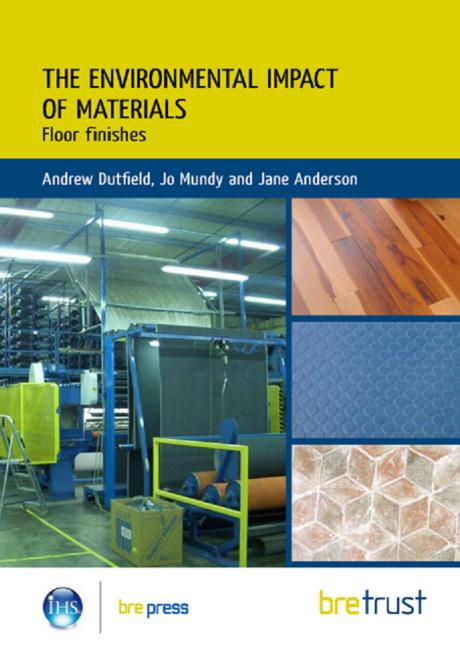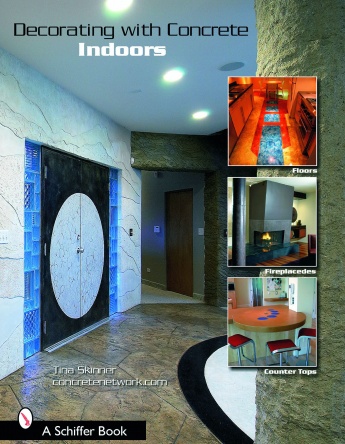Navigating Acres of Furniture - and Opportunity
If you're in the flooring business as a dealer or contractor, then "open, empty, clean, no take-up" is what you hope to see. Usually, though, what you find is furniture. Lots of furniture.

If you’re in the flooring business as a dealer or contractor, then “open, empty, clean, no take-up” is what you hope to see. Usually, though, what stands between you and that perfect job is a whole lot of furniture, sometimes acres of it.
Modular systems furniture, case goods, filing cabinets, boxes and the like can be a real nightmare if you specialize in the retrofit and replacement business. So if you are truly committed to the commercial flooring business, consider integrating a type of furniture handling referred to as vertical lift.
Vertical lift installation describes the process employed when modular systems furniture is gently lifted in-place rather than being partially or completely disassembled and moved out of an area. A related method is used for moving entire stacks of files or books completely out of an area. Vertical lift became possible – and economically viable – through the increasing use of carpet tile to replace old, worn out broadloom carpet. When the original broadloom was installed, it was in an open space without any furniture. After 5 to 7 years of wear, the carpet needs to be replaced. Now, the flooring dealer, tenant, and the owner are confronted with a dilemma.
What should be done about the hundreds of modular systems furniture workstations now sitting on the carpet, many of which were attached to each other and where electrical raceways were an integral part of each unit? It’s not simply a matter of just shoving them out of the way or picking them up and moving them. Using a crowbar or brute strength would result in significant damage; bent channels, damaged vertical connectors, broken electrical raceways and more.
The typical answer used to be to have the furniture dealer’s crew disassemble the furniture and then reassemble it once the flooring project was complete. This was expensive and the hidden cost, loss of work productivity, was staggering. Thus, the concept evolved that the best way to handle modular furniture was to lift in-place using jacks with attachments designed to fit the specific types/brands of furniture.
Major brands have certain design features that required jacks placement and lifting in different areas; some at the center post, others at midpoints. Lifting in the wrong area would distort, bend, break, or stress the frames causing damage. There were so many bad experiences that some manufacturers voided warranties when vertical lifting was done. With vertical lift equipment development by pioneers like Clete Stratman, Roy Wurdack, Frank Pelosi, and others, it was proven that lifting with the right attachments could be done without damage; techniques were refined and personnel were trained.
 Vertical lift techniques vary, but here’s a basic look:
jacks are placed at specific key areas around the modular unit(s), and the
attachment for that unit is engaged. The lift height is between ½” and ¾”, just
high enough to permit removal of the existing flooring and debris; floor prep;
application of adhesive and installation of the new carpet tile. Initially, 18” carpet squares were standard,
but now 24” or even 36” tiles are being used.
Vertical lift techniques vary, but here’s a basic look:
jacks are placed at specific key areas around the modular unit(s), and the
attachment for that unit is engaged. The lift height is between ½” and ¾”, just
high enough to permit removal of the existing flooring and debris; floor prep;
application of adhesive and installation of the new carpet tile. Initially, 18” carpet squares were standard,
but now 24” or even 36” tiles are being used.
Once the flooring is in place within an area, the jacks are disengaged, gently lowering the modular unit onto the new carpet, and then moved to another specified area. Using this technique, somewhere between 100 and 250 yards of carpet may be installed in a given day depending upon furniture density, ancillary case goods, filing cabinets, type of take-up and floor prep. Perhaps 80% of existing lift work is with modular systems, and 20% with various case goods.
Operational Considerations. Virtually all work must be performed during off hours when client personnel are not actively working. This means a typical day begins at 6:00 pm and continues to 2:00 am or later and doesn’t count mobilization time. Crews must have been trained on how to use the equipment or there must be at least one person, “the man with the box”, that will handle or oversee the VL equipment and electrical wire management.
Crew Mentality. The attitude of the crew must be consistent with this type of work, i.e., no “churn and burn or speedball labor.” Work must be completed within the nightly work schedule and returned to its normal state for personnel to report to work the next day. The rule with a vertical lift project is that there is no opportunity to return to correct or “punch out” previous work. A dealer’s field supervisor should be on location for crew oversight and verify areas are completed.
Get Everyone on the Same Page. Typical instructions to a client are as follows: Put aside or box up all personal items and clear the floor space around your area as much as possible. Place these items on top of your work surface or desk area. Computers on the floor should be turned off; no equipment will be unplugged; if questions, contact your facilities manager. A detailed walk-through by the field supervisor and the facility manager is a critical step.
There is always the “avalanche factor” to consider where any movement will result in a cascade of items as well as heavy overhead storage cases.
 Equipment and Training. There is no one brand or type of
equipment that is universal. Some are hydraulic; others a ratchet type, or
screw jacks. The biggest issue is training to effectively use the equipment
without damage to the modular system units. With a grimace, an experienced
installation manager once told me, “I just refer to my installer, Jim, as ‘Old
Sparky’, after he shorted out the [electrical] raceways on some modular units.”
More installers seem to be familiar with the technology but it is wise verify
their credentials. CFI, INSTALL, or FCICA members may be able to suggest
qualified or certified personnel with experience.
Equipment and Training. There is no one brand or type of
equipment that is universal. Some are hydraulic; others a ratchet type, or
screw jacks. The biggest issue is training to effectively use the equipment
without damage to the modular system units. With a grimace, an experienced
installation manager once told me, “I just refer to my installer, Jim, as ‘Old
Sparky’, after he shorted out the [electrical] raceways on some modular units.”
More installers seem to be familiar with the technology but it is wise verify
their credentials. CFI, INSTALL, or FCICA members may be able to suggest
qualified or certified personnel with experience.
What’s This Going to Cost Me? Sets of vertical lift equipment may be leased, lease-to-purchase, or purchased outright; an investment may be $4,000 to $10,000 per set. A set can consist of four to six jacks and attachments.
If you are going to do much volume, you will need at least two or three sets. Equipment is frequently custom-made according to demand and attachments are modified to accommodate changes in modular furniture design. A commitment to training, either on or offsite, may be required.
At one time, it was possible to hire a “man with a box” of vertical lift tools to work with a crew to accomplish a job and provide training. Some flooring manufacturers or other commercial organizations make vertical lift tools available to their clients or members.
Sales Strategies and Pricing. As one advertisement I’ve seen states, “The only thing standing between you and new carpet is…” followed by a picture of multiple connected units of modular systems furniture. Facility managers frequently have the money for new carpet but cannot cope with the loss of productivity or the expense of breakdown of modular systems, which may run $300-$600 per unit. If you can show them a way to avoid breakdown of existing modular furniture, unhooking computers, take-down of file servers, unhooking phone lines, and weekend-only installation, then you can be a hero and make the sale.
Make clear that their flooring selection must be of a modular type rather than broadloom carpet or larger scale sheet goods. Vertical lift installation will be at a higher price because furniture management is included in the price and the work will be performed after hours at premium time. Balance that against the loss of productivity and protracted installation time required for standard installation.
Since vertical lift may be more readily available in some areas, your competition and the pricing levels will vary. I would not be surprised to see pricing be at least double the sales rate for premium standard installation.
Get Hands-on. Be prepared to demonstrate how you would perform the project after you have carefully surveyed the project requirements. This will dampen any false expectations and protect you both. As with any commercial project, allow for mobilization and experienced project management.
I’d specifically advise lowering the estimate of the amount work that can be performed per day. Emphasize the careful, deliberate nature of how the work will be done. “Under-promise and over-deliver” should be your motto on vertical lift work!
The Bottom Line. Why should you be involved in vertical lift installation? There is huge potential that is growing every year. Think of the replacement cycle for carpet; a developer erects a building, installs 200,000 square feet of broadloom carpet, and then leases the space for 7 years. The tenant promptly sets up 1,200 modular workstations, uses the space and, at about 6 years, enters back into lease negotiations, which include new carpet.
Now can you see the opportunities found in vertical lift installation? I bet you do.

If you’re in the flooring business as a dealer or contractor, then “open, empty, clean, no take-up” is what you hope to see. Usually, though, what stands between you and that perfect job is a whole lot of furniture, sometimes acres of it.
Modular systems furniture, case goods, filing cabinets, boxes and the like can be a real nightmare if you specialize in the retrofit and replacement business. So if you are truly committed to the commercial flooring business, consider integrating a type of furniture handling referred to as vertical lift.
Vertical lift installation describes the process employed when modular systems furniture is gently lifted in-place rather than being partially or completely disassembled and moved out of an area. A related method is used for moving entire stacks of files or books completely out of an area. Vertical lift became possible – and economically viable – through the increasing use of carpet tile to replace old, worn out broadloom carpet. When the original broadloom was installed, it was in an open space without any furniture. After 5 to 7 years of wear, the carpet needs to be replaced. Now, the flooring dealer, tenant, and the owner are confronted with a dilemma.
What should be done about the hundreds of modular systems furniture workstations now sitting on the carpet, many of which were attached to each other and where electrical raceways were an integral part of each unit? It’s not simply a matter of just shoving them out of the way or picking them up and moving them. Using a crowbar or brute strength would result in significant damage; bent channels, damaged vertical connectors, broken electrical raceways and more.
The typical answer used to be to have the furniture dealer’s crew disassemble the furniture and then reassemble it once the flooring project was complete. This was expensive and the hidden cost, loss of work productivity, was staggering. Thus, the concept evolved that the best way to handle modular furniture was to lift in-place using jacks with attachments designed to fit the specific types/brands of furniture.
Major brands have certain design features that required jacks placement and lifting in different areas; some at the center post, others at midpoints. Lifting in the wrong area would distort, bend, break, or stress the frames causing damage. There were so many bad experiences that some manufacturers voided warranties when vertical lifting was done. With vertical lift equipment development by pioneers like Clete Stratman, Roy Wurdack, Frank Pelosi, and others, it was proven that lifting with the right attachments could be done without damage; techniques were refined and personnel were trained.

Once the flooring is in place within an area, the jacks are disengaged, gently lowering the modular unit onto the new carpet, and then moved to another specified area. Using this technique, somewhere between 100 and 250 yards of carpet may be installed in a given day depending upon furniture density, ancillary case goods, filing cabinets, type of take-up and floor prep. Perhaps 80% of existing lift work is with modular systems, and 20% with various case goods.
Operational Considerations. Virtually all work must be performed during off hours when client personnel are not actively working. This means a typical day begins at 6:00 pm and continues to 2:00 am or later and doesn’t count mobilization time. Crews must have been trained on how to use the equipment or there must be at least one person, “the man with the box”, that will handle or oversee the VL equipment and electrical wire management.
Crew Mentality. The attitude of the crew must be consistent with this type of work, i.e., no “churn and burn or speedball labor.” Work must be completed within the nightly work schedule and returned to its normal state for personnel to report to work the next day. The rule with a vertical lift project is that there is no opportunity to return to correct or “punch out” previous work. A dealer’s field supervisor should be on location for crew oversight and verify areas are completed.
Get Everyone on the Same Page. Typical instructions to a client are as follows: Put aside or box up all personal items and clear the floor space around your area as much as possible. Place these items on top of your work surface or desk area. Computers on the floor should be turned off; no equipment will be unplugged; if questions, contact your facilities manager. A detailed walk-through by the field supervisor and the facility manager is a critical step.
There is always the “avalanche factor” to consider where any movement will result in a cascade of items as well as heavy overhead storage cases.

What’s This Going to Cost Me? Sets of vertical lift equipment may be leased, lease-to-purchase, or purchased outright; an investment may be $4,000 to $10,000 per set. A set can consist of four to six jacks and attachments.
If you are going to do much volume, you will need at least two or three sets. Equipment is frequently custom-made according to demand and attachments are modified to accommodate changes in modular furniture design. A commitment to training, either on or offsite, may be required.
At one time, it was possible to hire a “man with a box” of vertical lift tools to work with a crew to accomplish a job and provide training. Some flooring manufacturers or other commercial organizations make vertical lift tools available to their clients or members.
Sales Strategies and Pricing. As one advertisement I’ve seen states, “The only thing standing between you and new carpet is…” followed by a picture of multiple connected units of modular systems furniture. Facility managers frequently have the money for new carpet but cannot cope with the loss of productivity or the expense of breakdown of modular systems, which may run $300-$600 per unit. If you can show them a way to avoid breakdown of existing modular furniture, unhooking computers, take-down of file servers, unhooking phone lines, and weekend-only installation, then you can be a hero and make the sale.
Make clear that their flooring selection must be of a modular type rather than broadloom carpet or larger scale sheet goods. Vertical lift installation will be at a higher price because furniture management is included in the price and the work will be performed after hours at premium time. Balance that against the loss of productivity and protracted installation time required for standard installation.
Since vertical lift may be more readily available in some areas, your competition and the pricing levels will vary. I would not be surprised to see pricing be at least double the sales rate for premium standard installation.
Get Hands-on. Be prepared to demonstrate how you would perform the project after you have carefully surveyed the project requirements. This will dampen any false expectations and protect you both. As with any commercial project, allow for mobilization and experienced project management.
I’d specifically advise lowering the estimate of the amount work that can be performed per day. Emphasize the careful, deliberate nature of how the work will be done. “Under-promise and over-deliver” should be your motto on vertical lift work!
The Bottom Line. Why should you be involved in vertical lift installation? There is huge potential that is growing every year. Think of the replacement cycle for carpet; a developer erects a building, installs 200,000 square feet of broadloom carpet, and then leases the space for 7 years. The tenant promptly sets up 1,200 modular workstations, uses the space and, at about 6 years, enters back into lease negotiations, which include new carpet.
Now can you see the opportunities found in vertical lift installation? I bet you do.
Looking for a reprint of this article?
From high-res PDFs to custom plaques, order your copy today!








